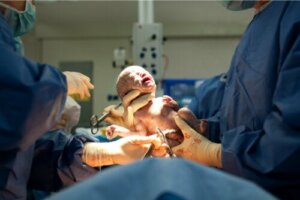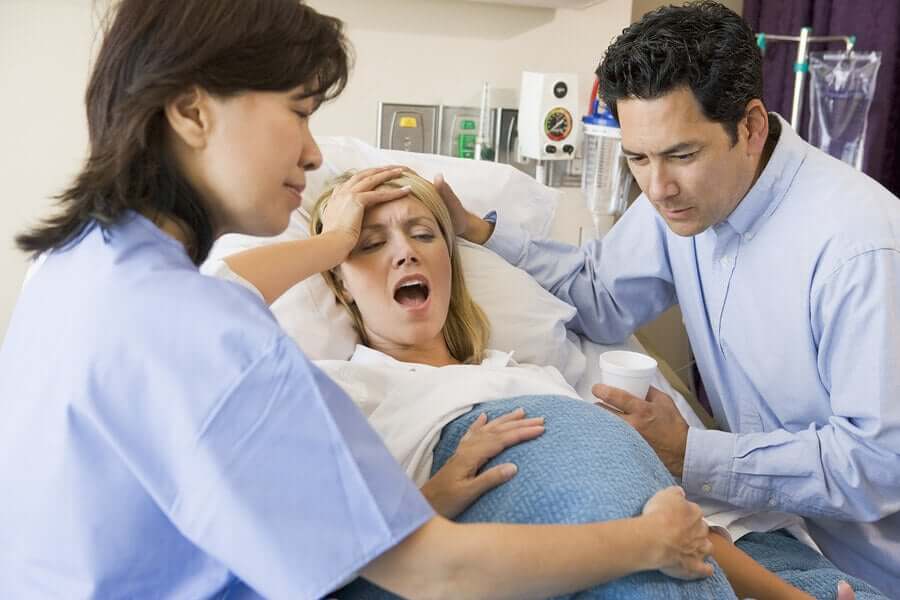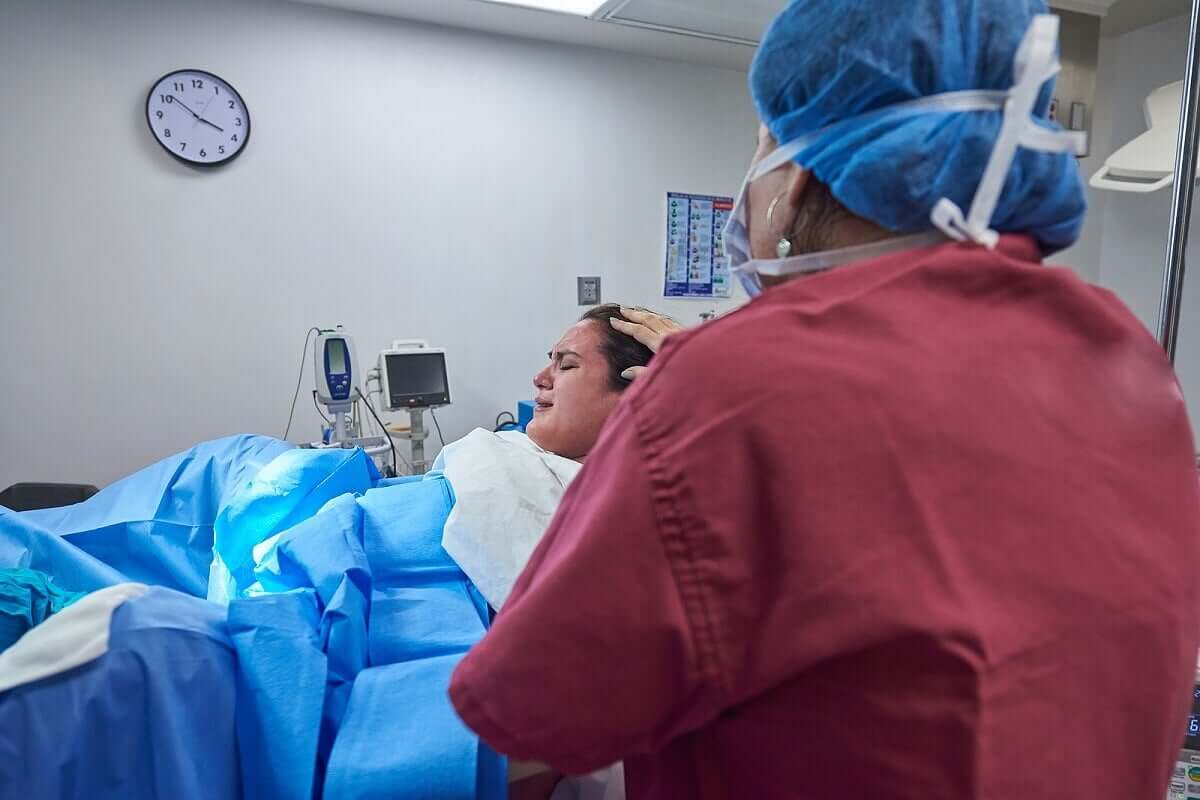Natural Childbirth After C-Section: Is It a Good Idea?

Many people think that it’s impossible to have a natural childbirth after a c-section. This isn’t true. In fact, most women do, and it’s not only possible, but also a good idea.
Specialists estimate that up to 75% of women can have a natural childbirth after cesarean, or vaginal birth after cesarean (VBAC) as it’s known in the medical field. In any case, each woman, along with her doctor, must decide if this is the best option in each case.
Vaginal delivery has important advantages, since it involves fewer health risks for the mother and baby. However, in some cases it’s not a good idea for different reasons. So it’s best to evaluate each case on a case-by-case basis.
Reasons for a natural childbirth after c-section

There are several reasons why it would be justified to attempt a natural delivery after a cesarean section. The most relevant are the following:
- Surgical complications. C-sections involve higher risks of heavy bleeding and deep vein thrombosis, i.e., formation of blood clots in the deep veins.
- Lower risk of infection. C-sections carry a higher risk of infection.
- Lower risk of injury. C-sections can sometimes result in injury to abdominal organs, such as the bladder or bowel.
- Decreased risk of hysterectomy. Natural childbirth reduces the risk of complications leading to removal of the uterus, or hysterectomy.
- Protection for subsequent pregnancies. Several cesarean deliveries can generate problems such as placenta previa (detachment) or placenta accreta (adhesion to the uterine walls) which, in turn, complicate subsequent deliveries.
- Faster recovery. C-sections require a longer hospital stay, greater care and, therefore, a longer delay in returning to normal activities.
- Personal preferences. Some women want to experience the vaginal type of birth and may be able to do so, even if they have had cesarean sections before.
A large study by Leeds University Hospitals indicates that cesarean delivery is associated with higher maternal and neonatal mortality, as well as more subsequent complications in the mother’s reproductive health.
Who can have a natural childbirth after a cesarean section?
Not all women can have a natural childbirth after a c-section. There are some exclusion criteria that are applied to avoid risks. One of the most important is the condition of the uterus.
For example, the type of incision that was made at the previous cesarean section plays a role. Those who had a vertical incision in the upper part of the uterus aren’t candidates for a vaginal delivery. Neither are those who have had uterine surgeries or have a history of uterine rupture.
Also read: Breathing Techniques for Childbirth
Other exclusion criteria are as follows:
- Having had a cesarean section less than 18 months previously
- Not having had a natural childbirth before
- Problems with the placenta
- An abnormally positioned baby
- A multiple pregnancy
- Presence of a disproportion between the size of the baby and the mother’s pelvis
- Plans to give birth in a place other than a hospital
- When the mother needs induced labor
- Older mothers
- Overweight or obese mother
- Preeclampsia
Some experts include having had two or more previous c-sections among the exclusions. However, a study by the University of Washington School of Medicine revealed that this doesn’t imply serious risks. However, the issue remains controversial.
Risks of natural childbirth after a c-section

Natural childbirth after a c-section carries several risks. The most serious of these is the uterus rupturing. This occurs in only 1% of cases, but it’s very dangerous, as it threatens the survival of both mother and baby.
Also read: Skin-to-Skin Contact: Essential After Childbirth
It occurs when the scar from the previous c-section breaks during natural childbirth and the uterus opens. If this happens, doctors must perform an emergency c-section to save the lives of both mother and child. Sometimes this includes removing the uterus, making it impossible to have children again.
The risk of rupture in the uterus during natural childbirth after cesarean section is much lower in women who have had a transverse incision at the previous cesarean section. This is why it’s so important to exclude the group of women who had a vertical incision in the uterus.
Is it possible to have a natural childbirth after a cesarean section?
If a woman is planning to have a natural childbirth after a c-section, she should inform her doctor well in advance. It’s important that she communicates all of her medical history in detail.
With accurate data, the doctor can make a realistic estimate of the likelihood of success and possible risks. The mother should be well-informed about the benefits and possible dangers of opting for this alternative.
The benefits of natural childbirth are many, but it’s important for the mother to be open-minded about the possibilities. If, in her case it isn’t advisable, she should take the doctors’ advice. The most important thing is to preserve your safety and the safety of the baby on the way.
All cited sources were thoroughly reviewed by our team to ensure their quality, reliability, currency, and validity. The bibliography of this article was considered reliable and of academic or scientific accuracy.
- Tahseen, S. (2010, enero). Vaginal birth after two caesarean sections (VBAC-2)-a systematic review with meta-analysis of success rate and adverse outcomes of VBAC-2 versus VBAC-1 and repeat (third) caesarean sections. PubMed. https://pubmed.ncbi.nlm.nih.gov/19781046/.
- Cahill, A. G. (2010, marzo). Vaginal birth after caesarean for women with three or more prior caesareans: assessing safety and success. PubMed. https://pubmed.ncbi.nlm.nih.gov/20374579/.
- Vargas Juscamaita, A. T., Lévano Castro, J. A., & Lazo Porras, M. D. L. Á. (2013). Parto vaginal después de una cesárea: aplicando un puntaje al momento del ingreso en un hospital. Revista peruana de ginecología y obstetricia, 59(4), 261-266.
This text is provided for informational purposes only and does not replace consultation with a professional. If in doubt, consult your specialist.








